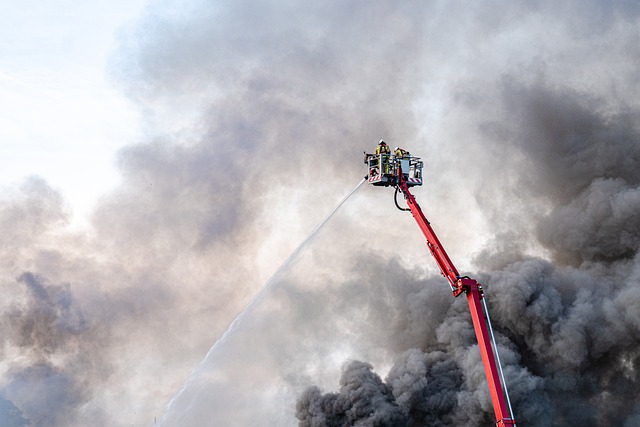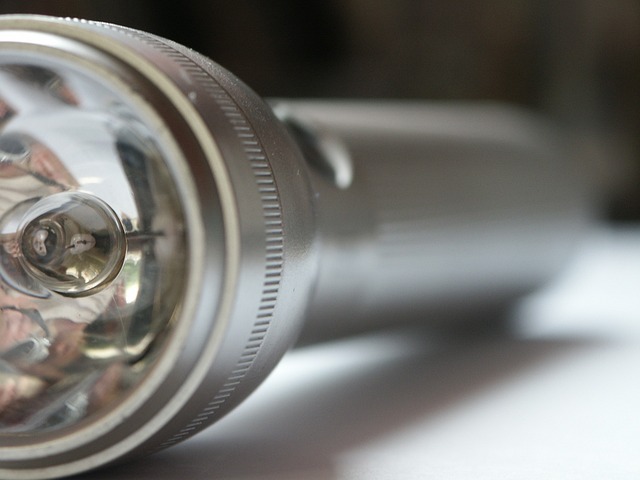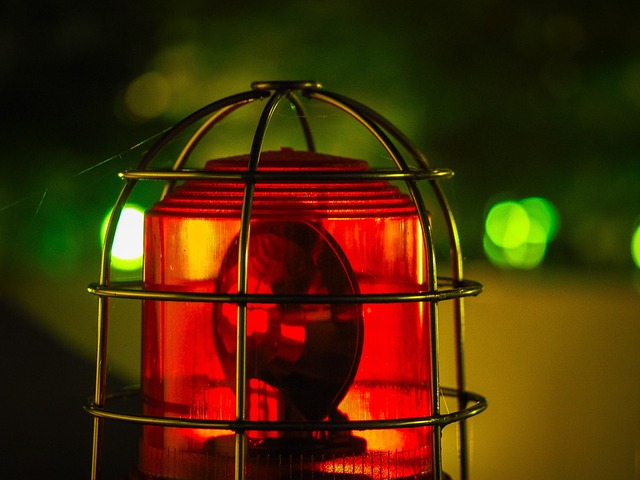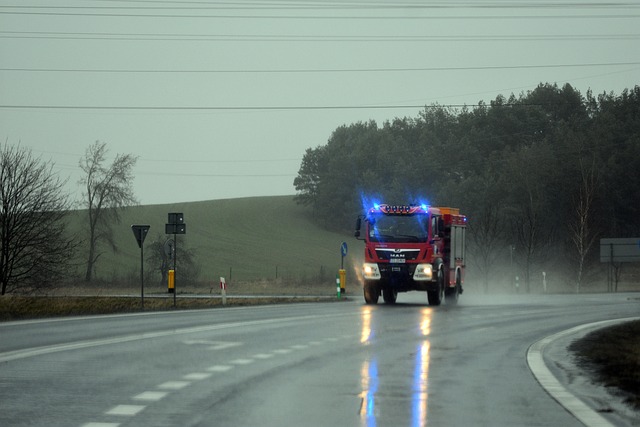Flashlights for emergency preparedness are indispensable tools for effective rescue operations, particularly at night or in low-visibility conditions. These flashlights must be robust, with reliable rechargeable batteries and advanced LED technology to ensure a high-intensity, energy-efficient light capable of cutting through darkness over extended periods. They feature sophisticated focusing systems that allow rescuers to identify specific areas quickly and accurately, which is paramount for timely life-saving actions. The ability to manage various light settings and conserve battery life is essential, as is the use of features like red lenses or filters to maintain night vision and operational stealth. Specialized training is necessary for rescuers to optimally deploy these lights, considering both their practical applications and the potential impacts on visibility and individual disorientation. By integrating these high-performance flashlights with strategic planning and training, emergency teams can significantly improve their response times and effectiveness during search and rescue operations under a variety of challenging conditions. Models like the ProTac HL and Fenix PD35 exemplify this, offering long-range illumination, multiple brightness levels, and beam types to meet the diverse needs of emergency situations.
When disaster strikes, the difference between a successful rescue mission and one that falls short can often hinge on the tools at rescuers’ disposal. Among these critical assets are high-intensity lights, which play a pivotal role in navigating the unpredictable environments where survivors await. This article delves into the essential characteristics of flashlights for emergency preparedness, particularly within search and rescue operations. We will explore key features that distinguish top-performing models, the importance of battery performance, and the impact of advanced technologies like LEDs and focusing systems. Furthermore, we’ll discuss how strategic deployment and training with these lights can enhance the effectiveness of nighttime rescue missions. Understanding the necessity of high-intensity illumination in such scenarios is paramount for ensuring that rescuers are equipped to see through darkness and obstacles to safely locate and assist those in need.
- Understanding the Necessity of High-Intensity Lights in Rescue Missions
- The Role of Flashlights for Emergency Preparedness in Search and Rescue Operations
- Key Features to Look for in Emergency Flashlights for Rescue Teams
- Top High-Intensity Flashlight Models for Effective Nighttime Rescue Missions
- Battery Performance: Ensuring Longevity and Reliability in Rescue Flashlights
- Advanced Technologies in Rescue Flashlights: LEDs, Focusing Systems, and Rechargeable Batteries
- Training and Strategic Deployment of High-Intensity Lights in Emergency Situations
Understanding the Necessity of High-Intensity Lights in Rescue Missions

High-intensity lights play a pivotal role in emergency rescue operations, serving as beacons in the most challenging conditions. In environments where visibility is compromised by darkness or debris, rescuers rely on the piercing illumination provided by high-intensity flashlights for emergency preparedness to navigate and locate individuals in distress. These lights are not just a tool but an essential asset that can significantly increase the chances of a successful mission. The durability and robust construction of these flashlights ensure they can withstand the rigors of rescue work, from urban search and rescue to wilderness expeditions. They are designed to operate efficiently under a variety of demanding conditions, including water submersion and extreme temperatures, providing rescuers with reliable light when it’s most needed. The high lumen output of these devices can illuminate vast areas or focus on small subjects, such as examining a victim’s injuries in low-light situations or signaling to other personnel during night operations. Incorporating flashlights for emergency preparedness into a rescue team’s arsenal is not just a precaution; it’s an investment in the safety and effectiveness of rescue missions under any circumstances.
The Role of Flashlights for Emergency Preparedness in Search and Rescue Operations

Flashlights for emergency preparedness play a critical role in search and rescue operations, serving as indispensable tools for rescuers when every second counts. Their compact design allows responders to navigate through tight spaces and complex environments that larger light sources cannot access. During emergencies, such as natural disasters or accidents in remote areas, the reliability of high-intensity flashlights ensures that rescue personnel can effectively illuminate darkened or obscured areas. These devices are engineered with advanced LED technology, providing a balance between long battery life and intense brightness, crucial for prolonged searches and critical for signaling or locating individuals in need of assistance. The versatility of modern flashlights for emergency preparedness also means they can be used as impromptu signaling devices, with features like strobe functions that can disorient potential hazards or signal to other rescuers over long distances. Moreover, the durability of these lights is unparalleled, with many designed to withstand harsh conditions and rough handling, which is often inevitable in rescue missions. Incorporating flashlights for emergency preparedness into the arsenal of search and rescue teams enhances the chances of a successful mission by providing the necessary illumination and support to locate and rescue individuals promptly and safely.
Key Features to Look for in Emergency Flashlights for Rescue Teams

When selecting flashlights for emergency preparedness, particularly for rescue missions, it’s crucial to prioritize durability and reliability as they are often used in challenging environments and situations where lives hang in the balance. Rescue teams require flashlights that can endure extreme conditions, including water and dust exposure, as well as rough handling. LED technology is a standout feature due to its longevity, brightness, and energy efficiency. Look for models with high lumen outputs for visibility in the darkest environments, and multiple lighting modes—including strobe and SOS signals—to aid in signaling for help or illuminating narrow areas.
Additionally, the best emergency flashlights are those that offer a robust design, often made of aircraft-grade aluminum or other high-strength materials, to withstand drops, vibrations, and impacts. Impact resistance is a key factor; the flashlight should maintain functionality even after being dropped from significant heights. Battery life is also paramount, with models that feature rechargeable batteries or multiple power sources—such as AA/AAA alkaline backup options—ensuring that rescuers are not left in darkness during critical operations. Weatherproofing, a sturdy clip for attachment to clothing or equipment, and a user-replaceable battery or bulb complete the list of essential features for flashlights designed for emergency preparedness and rescue missions.
Top High-Intensity Flashlight Models for Effective Nighttime Rescue Missions

High-intensity lights play a pivotal role in facilitating successful nighttime rescue missions, with the top flashlight models being indispensable tools for emergency preparedness. Among the plethora of options available, certain models stand out due to their superior design and performance. The Streamlight 88060 ProTac HL USB Flashlight, for instance, offers a high lumen output that can pierce through the darkest environments, featuring a C4 LED that emits a powerful beam. This flashlight’s versatility allows users to select from various brightness levels and beam types, making it ideal for both close-up tasks and long-range signaling. It’s also rechargeable, which is essential for extended missions where battery life can be critical.
Another robust contender in the realm of emergency lighting is the Fenix PD35 Tactical Flashlight. This compact yet durable tool is designed to provide an intense beam that can illuminate objects over 600 feet away. Its tactical focus system allows for a wide or focused beam, catering to various search and rescue scenarios. The flashlight’s sturdy construction with an anti-roll design ensures it remains operational even in the most challenging conditions. With a long battery life and multiple output settings, the Fenix PD35 is a reliable companion for those who prioritize high-quality emergency preparedness equipment. Both the Streamlight 88060 ProTac HL USB and the Fenix PD35 Tactical Flashlight are exemplary models that contribute significantly to the safety and success of nighttime rescue operations.
Battery Performance: Ensuring Longevity and Reliability in Rescue Flashlights

High-intensity lights are indispensable tools for rescue missions, particularly in emergencies where every second counts and visibility can be critical to success. The performance of a flashlight during such operations hinges significantly on its battery longevity and reliability. For emergency preparedness, flashlights for rescue operations must be equipped with robust power sources capable of sustaining high-intensity output over extended periods. Advanced lithium-ion batteries are often preferred due to their high energy density and ability to maintain performance under extreme temperatures and conditions that rescuers frequently encounter in the field. The design of these flashlights incorporates battery management systems (BMS) to safeguard against overcharging, deep discharge, and to ensure optimal charging cycles for sustained use. This not only guarantees a dependable light source throughout a rescue mission but also extends the effective lifespan of the device. Moreover, high-quality flashlights for emergency preparedness are engineered with LEDs that offer a balance between brightness and energy efficiency, further contributing to the reliability of the lighting system in critical situations. Features such as rapid charging capabilities and the ability to operate on various power sources, including disposable batteries in remote areas where recharging is not an option, ensure that rescuers have a reliable light at all times, enhancing their effectiveness in saving lives.
Advanced Technologies in Rescue Flashlights: LEDs, Focusing Systems, and Rechargeable Batteries

In the realm of emergency preparedness, flashlights have undergone significant advancements, particularly with the integration of LED technology, which has revolutionized the way rescuers illuminate dark environments. High-intensity LEDs provide a brighter and more energy-efficient light compared to traditional bulbs, ensuring that first responders can see further and for longer periods during critical operations. The focusing systems incorporated into modern rescue flashlights are another leap forward; these allow for a concentrated beam that can reach great distances, cutting through smoke or darkness to locate individuals in need of assistance. This precision is crucial when every second counts, as it enables rescuers to quickly pinpoint areas of interest without wasting valuable time. Moreover, the rechargeable battery technology paired with these flashlights enhances their effectiveness by eliminating the need for disposable batteries, which could be scarce during long-duration missions. The reliability of rechargeable power sources is a significant advantage, as it ensures that flashlights are always operational when needed most. Flashlights for emergency preparedness are not just tools but a cornerstone of effective rescue operations, providing the illumination necessary to navigate through chaotic and perilous situations with greater efficiency and safety. The combination of LED technology, advanced focusing systems, and rechargeable batteries in rescue flashlights represents a significant evolution in the field of emergency preparedness, highlighting the commitment to innovation that saves lives.
Training and Strategic Deployment of High-Intensity Lights in Emergency Situations

In emergency situations, the strategic deployment and training associated with high-intensity lights, such as specialized flashlights for emergency preparedness, play a pivotal role in effective rescue missions. Flashlights designed for emergency scenarios are engineered to provide intense illumination, crucial for navigating through dark environments that are often encountered during these operations. Rescue teams are rigorously trained to handle these high-intensity lights, ensuring they can optimize their use both as a tool for sight and as a signaling device to attract attention or guide other responders. This training encompasses understanding the different light settings available on modern flashlights, which range from bright spotlights ideal for long-range search efforts to diffused beams that illuminate broader areas, essential for situational awareness in confined spaces.
The strategic deployment of these high-intensity lights is equally important. Rescue personnel must consider the impact of light on visibility as well as its potential to disorient or temporarily blind individuals if misused. Additionally, the conservation of battery life and the management of light pollution are critical considerations during prolonged missions. Flashlights for emergency preparedness are often integrated with additional features such as red lenses or filters to preserve night vision and prevent giving away the rescue team’s position. By combining rigorous training with strategic deployment, emergency teams can enhance their effectiveness in carrying out rescue operations under challenging conditions, ensuring they are adequately prepared for various scenarios that require high-intensity illumination.
In conclusion, the critical role of flashlights for emergency preparedness in search and rescue operations cannot be overstated. High-intensity lights serve as indispensable tools for rescue teams, enhancing visibility and enabling effective nighttime missions. The selection of flashlights with robust features, advanced technologies like LEDs, focusing systems, and rechargeable batteries, ensures that rescuers are equipped with reliable lighting solutions. Training and strategic deployment of these lights are paramount to the success of emergency operations. As we have seen, the right high-intensity flashlight can make a significant difference in complex rescue missions, potentially saving lives and improving outcomes for those in dire need. Therefore, it is imperative for both individuals and organizations to invest in quality emergency preparedness equipment, including top-of-the-line flashlights, to be ready when the urgency of rescue calls.
